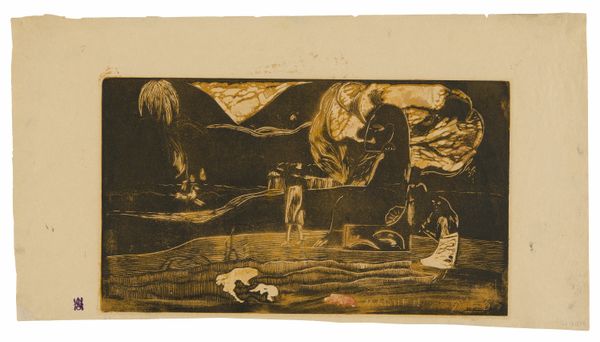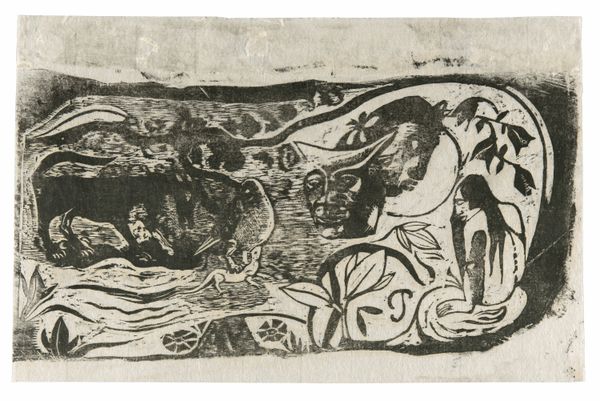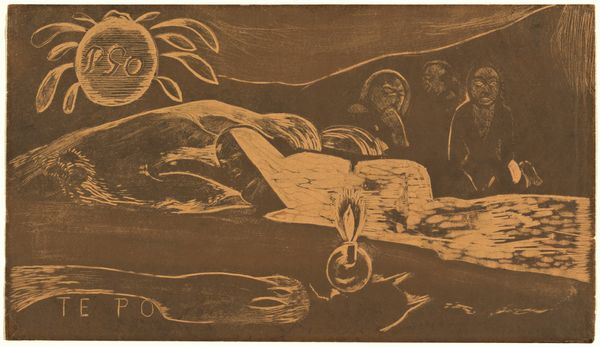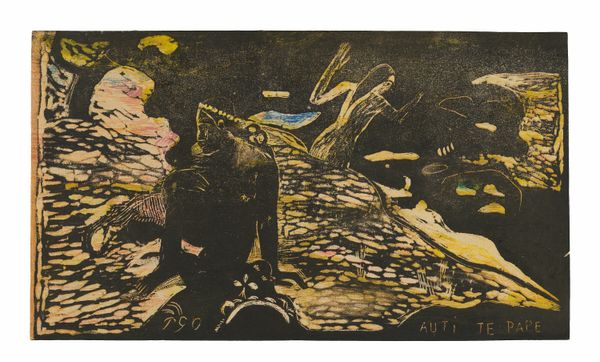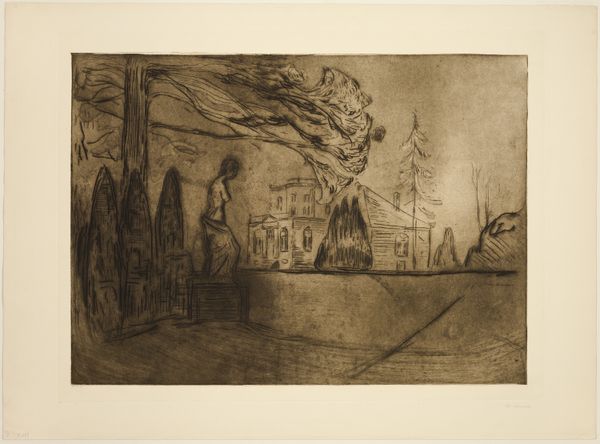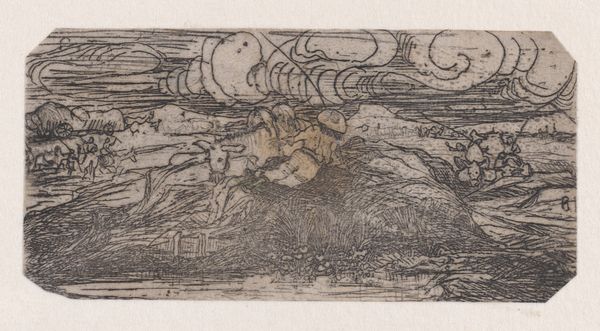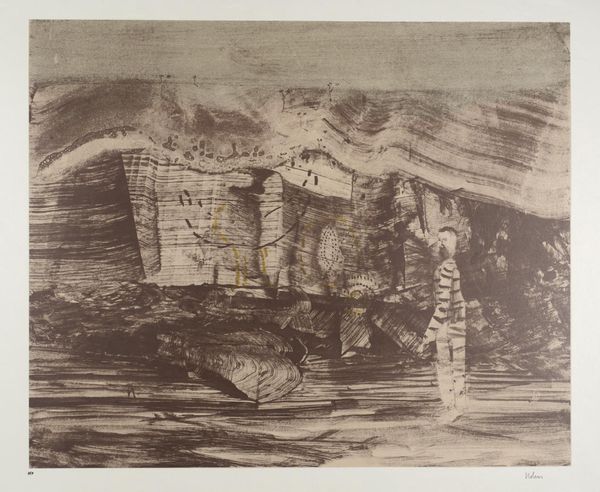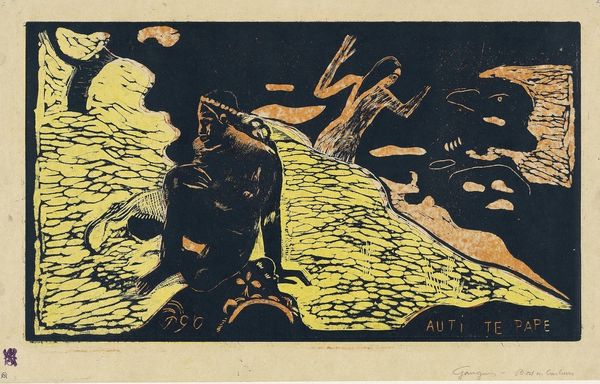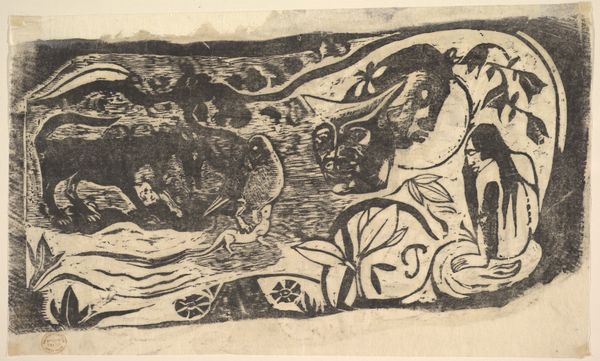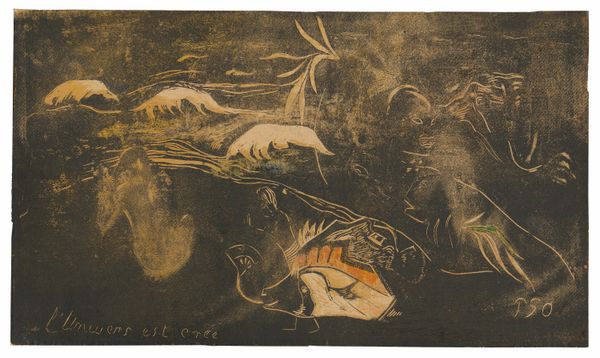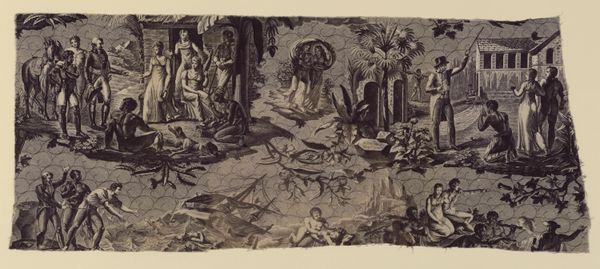
Maruru (Offerings of Gratitude), from the Noa Noa Suite 1893 - 1894
0:00
0:00
print, paper, woodcut
#
narrative-art
# print
#
landscape
#
figuration
#
paper
#
woodcut
#
symbolism
Dimensions: 206 × 357 mm (image); 235 × 394 mm (sheet)
Copyright: Public Domain
Curator: This woodcut by Paul Gauguin, created between 1893 and 1894, is titled "Maruru (Offerings of Gratitude), from the Noa Noa Suite." Note the interplay between light and dark; what's your immediate reaction? Editor: Whoa, that's intense. Like a dream—or a memory half-faded. It's got that brooding quality, a sense of a spiritual landscape. Like looking into somebody else's soul for a brief, revealing moment. Curator: The formal composition directs our gaze. See how Gauguin uses contrasting textures to delineate the figures and the environment. This, and the shallow depth of field, flattens the picture plane. Editor: Yeah, and it kinda throws you off balance, doesn’t it? It's all compressed—the figures feel huge, pressing in. That seated figure, the way the dark inks coalesce around her... she's like a force of nature, silent and observing. Are those offerings in front of her? Melons, maybe? Curator: Possibly. The title, "Maruru," suggests the act of giving thanks. These elements likely symbolize a reciprocal relationship with nature, a common theme within Gauguin’s oeuvre from this period. Editor: It feels much more than mere thankfulness though, right? It’s like a deeper communion. A raw, unfiltered conversation with the earth and spirits that hang around it, whispering secrets into the wind. The way he scratched into the wood is so tangible, it feels almost primal. Curator: Indeed. He deliberately rejects academic polish to evoke a sense of authenticity. Observe how the rough textures contribute to the emotional resonance. The entire composition conveys a deliberate attempt at simplifying form. Editor: Totally. And maybe he’s also hinting at how colonizers struggle to grasp the real heart of Polynesian culture—those complex rituals. He captures the visual moodiness of the islands—all of that humid dark pierced by golden sunshine, if you know what I mean. It really speaks to the layers there. What about the landscape itself? That jagged peak behind the figures gives me pause… Curator: Consider how that echoes her seated, stoic form. A compositional rhythm which harmonizes the figure and ground, reinforcing her iconic presence. Editor: Mmm, makes me feel so restless and inspired at the same time, yearning to see all these ancient ceremonies… I imagine these early works hold keys for artists everywhere looking to break boundaries and explore these hidden territories, in whatever language. Curator: An apt insight, and the tension he creates using minimal means is noteworthy. Hopefully, visitors, now seeing this piece, understand both the visual structures and the expressive depths within the work more fully.
Comments
No comments
Be the first to comment and join the conversation on the ultimate creative platform.
